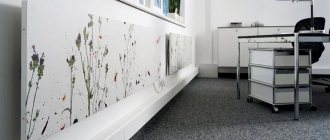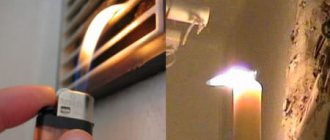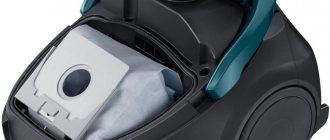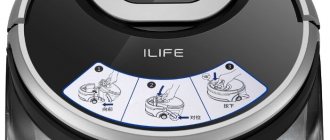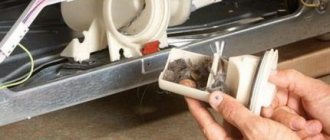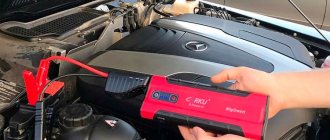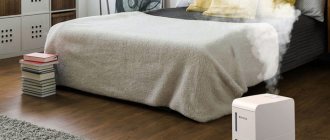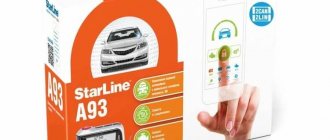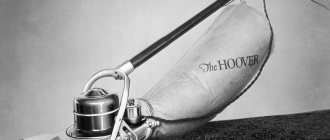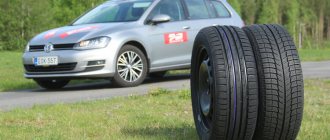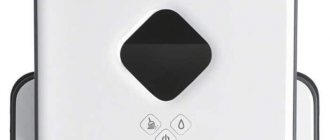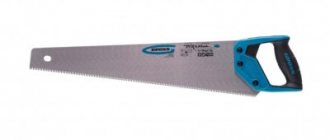The list of equipment necessary for minor repairs includes a spray gun for painting a car. The equipment is used for spraying paints and primers (air-drop method) on certain surfaces. The trade offers a wide range of tools that can be used not only for painting cars, but also for repair work.
Equipment in use
What is a spray gun
A special device with which enamel, varnish or any other liquid solution is applied is called a spray gun. Fine spraying allows you to obtain a thin and uniform layer, practically without smudges, on the surface being treated.
Important! The device helps to work on hard-to-reach areas, corners and relief surfaces not only on the car. It can even be used to paint the inside of central heating radiators and other areas with difficult access.
Why do you need a spray gun?
In addition to painting work, the car sprayer can be used:
- for whitewashing and priming walls and ceilings;
- varnishing wooden surfaces;
- applying anti-corrosion materials to metal in the garage;
- cleaning old wallpaper from walls - uniform moistening or applying a special composition to facilitate their removal;
- spraying plants in the garden with pest control compounds.
Some pastry chefs have managed to adapt equipment for velor cakes.
Important! The equipment is used for repairing premises at all stages of work, when painting vehicles or implementing creative ideas.
Spray marking
Device structure
The following components are included in car painting spray guns:
- handle - necessary for directing the sprayed composition and holding the device;
- tank - it contains the liquid composition used for spraying;
- trigger - sets the locking needle in motion, when pressed, paint begins to spray;
- nozzle - located at the front of the gun, the nozzle fits into part of the spray base.
For pneumatic models, the pressure regulator (p) is located in the rear area of the gun; it is necessary to adjust the level at which air is supplied. The second similar mechanism is a shut-off screw that regulates the intensity of supply of liquid material.
Device structure
Pros and cons of an electric spray gun for painting cars
Painting a car with an electric spray gun is not a good idea. It will not give the same quality of painting as a pneumatic sprayer. The secret lies in the design of the device. A pneumatic sprayer must have a compressor. The air flow from it breaks the paint into much smaller particles than even the highest quality and most expensive electric sprayer would.
The main disadvantage is the poorer quality of painting compared to pneumatic models. There are also advantages - power tools are much cheaper. It is easy to maintain and has compact dimensions. Due to this, it is more convenient to work with him. Budget models have strong vibration. They are difficult to paint. The hand gets tired quickly and the quality of work decreases.
Electric spray gun BOSCH.
Be careful with plastic options. They are cheaper and lighter. But what will happen to the parts after the first painting and washing with solvents is unknown. Plastic can only be used in body parts, all moving parts, nozzles, etc. must be made of metal. Therefore, take spray guns only from well-known manufacturers. In our country, the most common products are Bosch, Ryobi, Wagner, Elmos, Sturm, Bort, Fit, Paint Zoom, Wagner, Foreman, Caliber, Zubr, Fiolent, etc.
The best results are shown by spray guns with a mini-compressor. In terms of quality of work, they almost reach pneumatic models. A high-quality electric spray gun for painting a car with a mini-compressor will cost between 4,500-12,000 rubles. The airless option will cost only 2000-2500 rubles. A good option is an HVLP system spray gun with a mini-compressor. The quality of work is only slightly inferior to pneumatic spray guns. But the cost will be from 30 thousand rubles. Electric spray guns are ideal when painting a car with liquid rubber.
Pay attention to: Design and types of spray guns for water-based paint
Spray gun spray systems
Pneumatic equipment is divided according to the technological features of spraying:
- with high p - HP system;
- small p with small volume - HVLP;
- small volume and p - LVLP.
Important! When purchasing equipment, you need to pay attention to the abbreviation present in the model names.
HP system
The devices are characterized by high output p values, reaching up to 1.5 atmospheres. Fast and uniform application of the solution is ensured by a wide forming torch and high air flow.
The advantages of the system include:
- short turnaround time;
- high-quality spray;
- homogeneity of the colorful torch.
The disadvantages are presented:
- high air consumption, requiring a powerful compressor;
- high p values, which require certain skills in handling the tool;
- consumption - about 60% of materials go into the “fog”.
Important! Due to severe air pollution, personal protective equipment must be used when working with garage equipment.
HP system
HVLP system
It is characterized by a lower output p, which helps to obtain a more dense application. Low rates allow you to keep the device close to the surface, reducing paint consumption and air pollution.
The advantages of the system include good coating quality and a small loss of solution of 30%. The disadvantages are high cost, the need to use a powerful compressor due to air consumption.
Important! Saving almost 20% of paint and varnish materials allows you to quickly recoup the cost of purchasing equipment.
HVLP system
LVLP system
During operation, the equipment requires minimal volumes of air at the input; it is resistant to changes in p in the compressor. The list of advantages of the system includes:
- minimal loss of solution - no more than 20%;
- resistance to unstable p;
- low air consumption.
The disadvantages of the system include its high cost and the need for skills to operate the device.
LVLP system
Compressor selection
When selecting this technical unit, you should take into account what type of spray gun it is. We remind you that there are electric and pneumatic. The second model is considered preferable in terms of performance indicators. Each type of equipment (HP, HVLP, LVLP) has its own characteristics. Based on them, the compressor is selected. HP units require 4 atm for manipulation, while the spray gun incurs noticeable losses during operation (which is why they are gradually going out of use). A compressor is required that is not very productive (100-300 l/min.) with an indicator of 6 atm. AURORA BREEZE-8, KOLNER KAC 24 L are suitable. Devices designed according to the HVLP type require 2-3 atmospheres for spraying. When choosing a compressor for this type of device, we pay attention to technical products with a capacity of 360 l/min, and from 1.5 to 4 atm. The following types of equipment have proven excellent: QUATTRO ELEMENTI 248-504 KM 50-380, FUBAG VDC 400/50 CM3, GARAGE PK 50.MKV370/2.2. LVLP is a technologically advanced instrument, operating in the range from 0.7 to 1.5 atm. A compressor with a capacity of 150-300 l/min is required. The output indicators must be at least 2 atm. We recommend purchasing: QUATTRO ELEMENTI SENZA-24, ZUBR ZKP-190-24-1.5.
Compressor AURORA BREEZE-8
Compressor QUATTRO ELEMENTI KM 50-380
Compressor BISON ZKP-190-24-1.5 Please note: Paint the bumper with a spray can yourself with high quality
How to choose a spray gun for painting a car
Before purchasing a device, you need to familiarize yourself with the basic quality characteristics. The paint consumption and the quality of the work performed depend on the indicators.
Receiver material
The choice depends on the class of equipment:
- for HP - receiver at 4-6 atm;
- HVLP - 1.5-4 atm.;
- LVLP - 0.7-2 atm.
Important! The receiver is selected individually for each brand of spray gun.
Location and volume of the tank
The location of the tank does not affect the operation of the air gun:
- installed below - selected by craftsmen who are comfortable working with it;
- top - uses all the paint material to the last drop.
Plastic tanks are used for acrylic and water-based paints; metal tanks are used for solvent-based materials. The volume is selected at the discretion of the user - excessive weight can interfere with work.
Bottom position of the tank
Performance and Power
For domestic purposes, equipment with a power of up to 500 W is used; professional models require higher performance. The latter are capable of working with materials of any viscosity; they are always distributed evenly.
The performance of guns is the volume of air entering and exiting. Stable spraying is ensured by the high level of efficiency of the spray gun.
Nozzle diameter
The parameters differ depending on the type of paint solution used:
- local application - 1.2 mm;
- varnishes, water-soluble composition, base - 1.3 mm;
- acrylic and varnish - from 1.4 to 1.7 mm;
- primer - from 1.6 to 2.2 mm;
- liquid putty - from 2.5 to 3 mm.
If the nozzle diameter is chosen incorrectly, it may become clogged with particles that are too large.
Nozzle size selection
The nozzle for paint exit (nozzle) also has a certain size. The paint material flows through a nozzle into which a needle is inserted to regulate the flow of paint. With the help of a needle that moves forward/backward, the pressure is adjusted: when the needle is completely lowered, the nozzle is hermetically closed by a pressed spring. Depending on the viscosity of the materials, the size of the nozzle diameter will change. Based on the nozzle diameter and settings, spray guns are divided into the following groups:
- 1.1 — Regular painting;
- 1.2 - 1.5 - Application of varnish or base, and also used for painting with water-soluble varnishes;
- 1.3 - 1.7 - Application of acrylic or varnish;
- 1.5−2.1 - priming;
- 2.6−3.1 - applying liquid putty.
These are approximate general rules that must be followed. Many painters choose one size for the nozzle and are quite capable of painting with any materials.
It is also useful to read: Raptor paint and its application on a car with your own hands
There are some limitations, for example, applying primer requires a large nozzle size, otherwise the primer will need to be diluted very thinly. Acrylic varnish is important for its filling ability, so it is not advisable to dilute it, and in its undiluted form you will need a nozzle with a cross-section of 3.0 units.
These are general rules that do not have to be strictly followed. Some painters choose one nozzle size and apply any materials perfectly. To use water-soluble paints, use a separate gun.
Important! When replacing water-soluble paint with enamel, the material may curl and spray will occur with flakes. And also, after using water-soluble paint, you need to be sure that the spray gun is clean and dry after use, this will save it from rust.
Which compressor is suitable for a spray gun?
The device is selected in accordance with the characteristics of the pistol:
- supply of a certain volume at the required p - the compressor capacity in cm3 should be 1.5 times greater than what is needed for the spray gun;
- insufficient performance will not give good atomization;
- the air supply parameter must be clarified - some compressors only give good pressure indicators.
Hoses with fittings are of great importance. A quarter inch cord will interfere with the stable flow of air; for normal operation, a 3/8 inch cord with fittings that do not impede air flow is required.
Compressor for spray gun
Manufacturers of spray guns
The TOP popular equipment suppliers include:
- “GAV” is a budget line for beginners learning the nuances of painting; the devices are used for applying acrylic and basic base;
- “Walcom” - used for professional auto repair shops, the manufacturer produces a variety of models;
- "SATA" - equipment is characterized by resistance to wear and long service life.
Important! In order not to wonder which spray gun you can choose for painting a car, you need to familiarize yourself with the characteristics of the models.
Top spray guns for painting cars
The rating of popular devices for paint and varnish work includes:
- Devilbiss Flg 5 RP is a professional budget model that requires 270 liters of air every minute and produces a torch 280 mm wide. The device has an aluminum body, a needle and nozzle made of stainless steel. Works with all types of materials, with the exception of water-based solutions. The equipment is supplied without a case, in cardboard packaging.
- Walcom ASTUROMEC 9011 HVLP 210 is an inexpensive gun that allows you to paint surfaces with high quality. Requires 220 liters per minute of air, despite the built-in HVLP system. The package includes a gearbox, a convenient plastic case, spare parts: springs, retaining rings, gaskets, air valve rod. Additionally, oil for lubrication of contacting parts and a cleaning kit are supplied.
- Walcom SLIM S HVLP - has a high coefficient of solution transfer to the surface, within 85%. During operation, 200 liters of air per minute are used. The package includes a case, a regulator with a pressure gauge, oil, spare parts, a cleaning brush and a key.
- SATAjet 1000 B RP - the device is suitable for fine and large-scale processing. Requires a compressor with a capacity of 275 liters per minute, distributes about 60% of the solution. The package contains a cleaning brush and keys.
- Anest Iwata W-400 RP is a spray gun with standard pressure and high-quality assembly. It is characterized by a high speed of application of solutions, subject to high air consumption - up to 370 l/min, which requires choosing the right compressor (not all models can provide the required parameters). The torch width is 280 mm, the equipment is supplied in a cardboard package with a colorful filter and a cleaning brush.
It is necessary to select equipment based on build quality, tank capacity, its position and performance. The user must focus on popular models, in accordance with their purpose, and select devices that are suitable for hand.
Paint spray systems
To better understand the difference in the types of spray gun, consider the simplified principle of operation when spraying. Compressed air comes from the compressor under pressure. Next, in the spray gun, the air is combined with the paint coming from the barrel. Combining in the air cap, the paint is split by air and a torch is formed at the outlet of the nozzle.
The type of spray gun determines the pressure with which the paint material is sprayed. Below are the most used spray systems by which spray guns differ.
- HP (High Pressure) - high pressure.
- HVLP (High Volume Low Pressure) - low pressure, high volume.
- LVLP (Low Volume Low Pressure) - low pressure system, low volume.
HP system spray guns
The system is long outdated. Spray guns of this type have been used in auto body repair shops for a long time. For stable operation of the device, a pressure of 4 atmospheres is required. At the moment of spraying, the pressure in the nozzle should not exceed 3 atmospheres. Such a device requires a small volume of compressed air to operate; the compressor is not very productive.
The HP system spray guns form a wide spray, and the paint and varnish material is applied evenly. The main disadvantage is the low coefficient of transfer of paints and varnishes to the surface. That is, when spraying, a mist is formed, as a result of which some of the materials do not reach the surface. Thus, only 45-50% of the sprayed material covers the surface, the remaining 50-55% does not settle on the surface.
Advantages: high speed of painting surfaces; low-power compressor, wide torch which forms a uniform application of the material.
Disadvantages: low transfer coefficient of sprayed materials to the surface; Also, increased pressure can contribute to the raising of dust during spraying, which can settle on the surface being painted.
HVLP spray guns
HVLP spray guns are characterized by low pressure and high volume, they are very common nowadays and are used when painting cars. The power of the spray gun depends on the compressor itself. Guns use a huge volume of air during operation, while spraying takes place at a fairly low pressure. Due to the low pressure during spraying, a large percentage of the material falls directly on the surface to be painted (about 80%).
Electric spray guns of the HVLP system have proven themselves well when coating with paints with Mother of Pearl or Metallic effects. Like all paint guns, spray guns of this type have their advantages and disadvantages.
Advantages: these include a good percentage of material transfer. Low level of fog formation during painting. Low pressure when spraying, will not raise a large amount of dust. High performance is also inherent in mini-pistols.
The disadvantages will include a high-performance compressor, which will need to be maintained in order to produce large volumes of air during operation. The need to use a large diameter hose to connect the compressor to the spray gun. When painting, paint and varnish materials must be applied at a short distance from the surface. The process requires a high degree of professionalism from the painter in order to carry out painting without smudges.
It is also useful to read: How to prime a car body with your own hands?
